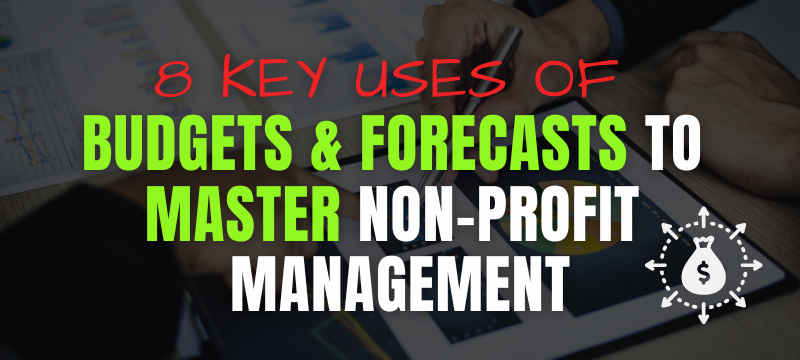If you’ve worked with a nonprofit Board, you know it’s a unique challenge. Board members…
From Challenges to Opportunities: The State of Nonprofit Management in 2024
In a rapidly changing world, nonprofit management and leadership are becoming increasingly complex. However, these challenges also present new opportunities for growth and innovation in nonprofit management. For the past five years, OTUS Financial Solutions has initiated the OTUS Association Exchange (OAX) survey to help nonprofit leaders learn and grow with each other. Our goal is to ensure that nonprofit leaders do not feel isolated, providing them with validation for their efforts and preparing them for an uncertain future. We have teamed up with the Ottawa Business Journal and Abacus Data, a well-known research firm led by David Coletto, who is frequently featured and cited by various media outlets.
At our recent OAX event, David Coletto, one of the country’s most recognizable and respected public opinion analysts and pollsters, conducted an in-depth analysis of the latest OAX results. News organizations often call upon David to provide analysis of public opinion events in action. In January 2024, The Hill Times named him among the Top 100 Most Influential People in Canadian Politics, stating, “When David Coletto releases polling numbers, Ottawa listens.”
One of the most striking findings from our survey of 87 nonprofit leaders, conducted between February and March, is the pervasiveness of a scarcity mindset. This attitude, heavily influenced by significant economic uncertainties, impacts decisions in many ways. As David Coletto put it, “People are increasingly coming to every decision point with a very different mindset than a few years ago.”
Finding #1: The Impact on Revenue and Expenses
The survey revealed that about half of the nonprofit leaders reported increases in revenue from membership dues and fees. However, this positive trend is more than offset by a sharp increase in expenses. An astounding 83% of nonprofit leaders reported higher expenses this year—nearly double the figure from May 2022 and almost 70 points higher than in June 2021. This rise in costs has made growing revenue and investing in operational efficiency priorities for most organizations.
Finding #2: Mixed Expectations and Concerns about Revenue
While there is some optimism related to future revenue, particularly from membership and sponsorship, significant concerns remain. Only 16% of nonprofit leaders expect an increase in government funding, raising worries about financial stability for the remaining leaders. Operating reserves are split, with leaders equally divided on whether they will increase or decrease.
Finding #3: Embracing Digital Transformation
The pandemic has accelerated the shift towards digital payment systems and financial reporting within not-for-profits. Most organizations have moved to Electronic Funds Transfers (EFTs) from traditional checks. Despite this progress, a substantial minority of organizations either do not receive monthly financial reports or do not review them. If this describes your organization, please get in touch with us, and we will help you get back on track!
Finding #4: The Financial Impact of Inflation
Inflation has significantly impacted the financial stability of not-for-profits. Six in ten leaders believe that inflation negatively affects their members’ economic security, citing declining membership, event revenue, and sponsorship. In response, half of not-for-profit leaders are implementing or planning to implement new digital tools to increase operational efficiency.
Finding #5: Challenges of Adopting New Tools
Implementing new digital tools and workflows comes with hurdles. Not-for-profit leaders face significant barriers in the form of time and resources, as noted by 81% of respondents. Concerns about workforce readiness and the cost of implementation highlight the need for strategic planning and resource allocation.
Finding #6: Strategic Financial Planning in Uncertain Economic Times
To respond to the current economic environment, nonprofit leaders have adopted strategic financial planning. This includes improving strategic planning, ensuring tighter budget controls, changing membership structures, and developing reserve funds. Despite these efforts, there remains little faith in the overall economic climate, with many leaders concerned about uncertainties in the labor market and the cost of living.
Finding #7: Modernization and the Road Ahead
Not-for-profit leaders experiencing disruptions and challenges are exploring ways to modernize their organizations to increase efficiencies and adapt to a changing landscape. The digital tools they are considering range from CRM and membership services to social media and content databases, along with AI. Despite the uncertainty for 2024 and beyond, organizations need to remain agile and proactive in their strategic planning.
In conclusion, the survey results show that it is a tricky, complicated, and fast-moving climate for not-for-profit leaders today. Nonprofit management, leading digital transformation, and strategic financial planning are ways in which organizations can navigate these uncertainties and seize new opportunities to grow and innovate. As David Coletto aptly concluded, the road ahead, while challenging, holds much opportunity for those who can adapt and innovate. Download the entire report on OAX to gain a detailed understanding of the findings and insights from this survey. This report is filled with valuable information and articles that provide a comprehensive view of the current state of the nonprofit world. Do not miss your copy by downloading one now!



